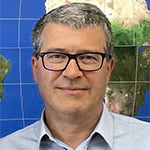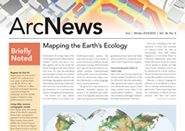As I understand it, a scientific discipline tries to gain new knowledge about particular areas of interest. In more practical terms, this means there must be questions in those areas that have not been answered. To find the answers, science develops and applies methods. Scientific disciplines differ in nature, but they have something in common—the attempt to gain knowledge.
So, is cartography a science? What are the areas of interest, the questions, and the methods used to shine light on those questions? What new knowledge does cartography seek to gain?
Before trying to answer these questions, it is important to agree on our understanding of cartography. If it is a discipline dealing with the question of how to make maps, then it relates more to a technology rather than a science. If it is a discipline dealing with the question of how to design maps, then it relates more to art than to science. But if we understand cartography as a discipline that tries to communicate spatial information efficiently, then it relates to science.
The communication of spatial information encompasses several areas of understanding: understanding humans and their context, needs, demands, and abilities; understanding the data, models, and algorithms of spatial information; and understanding how to communicate that spatial information to users efficiently by applying technologies, graphics, and methods of communication.
A couple of examples will illustrate these differences. If I draw a beautiful map, I am acting as an artist. If I program algorithms that allow the derivation of a map from a database, I am acting as a technologist. If I answer a question from a human user using a map, and I know how and why this is an efficient method, I am a scientific cartographer. This is cartography as a science.
The ability of maps and geographic information to connect and integrate datasets by the inherent geographic location and present the information in a user-friendly and understandable visual and tactual way is not only recognized as an intrinsic property of the map artifact but as a subject or research area. This leads to questions concerning why and in which ways maps communicate spatial information efficiently.
The International Cartographic Association (ICA), as an organization that is well-represented globally and internationally visible, has a special role as a promoter of the development of cartography and GIScience. Research and development at ICA aims to create theory and methods for cartography and geoinformation (GI) handling. By applying theories and methods in various fields, new tools can be created for cartographic and GI practice.
That is why ICA is running a research agenda that gives guidelines on actual and potential contributions to scientific research within cartography; documents current research activity in the field; suggests areas where more intensive or renewed effort is required; and discusses methods by which some of this research can be undertaken.
The scope of the agenda is wide, including both cartographic and GIScience issues, and addresses areas of interest described by these keywords: geographic information, metadata and SDIs, geospatial analysis and modeling, usability, geovisualization, map production, cartographic theory, and the history of cartography, education, and society. (Learn more about this agenda.)
This leads to a clear yes to the question, Is cartography a science? This conclusion is supported by the research agenda and the activities it reflects as well as the acceptance by the International Council for Science (ICSU) of ICA as a Full International Scientific Union Member at ICSU’s 31st General Assembly.
ICSU is an international non-governmental organization devoted to international cooperation in the advancement of science. Its members are national scientific bodies and international scientific unions. It comprises 120 multidisciplinary National Scientific Members, representing 140 countries and 31 international, disciplinary scientific unions. It is, in a way, a very exclusive group of sciences. The good news for cartography is that, from now on, ICSU will have 32 International Scientific Union Members, and cartography—through ICA—will have a strong voice in the world of science.
The importance of cartography was also validated by a resolution made at the fourth session of the United Nations Committee of Experts on Global Geospatial Information Management in August 2014. The resolution reads as follows:
The committee endorses the International Map Year 2015–2016 as proposed by the International Cartographic Association as a valuable means to promote the importance of maps and geoinformation.
I see the adoption of this ICA initiative as more proof of the relevance of maps and cartography and the importance of research in this domain. The International Map Year (IMY) 2015–2016 is a celebration to illustrate to the general public as well as decision makers the importance of making and using maps in a global context. IMY will be a joint effort by the ICA and the United Nations initiative of Global Geospatial Information Management (UN-GGIM). It will also be in line with the Rio+20 Agenda signed by the UN Secretary General. IMY will be formally launched at the ICA conference in Rio de Janeiro on August 23, 2015, and will continue until the end of 2016. Planning for national events associated with IMY will start in the beginning of 2015.
International Map Year 2015–2016 has four target groups: the general public, schoolchildren, professionals, and governments. Activities can include every action that is related to its aim of illustrating the use and creation of maps. The objectives of the resolution are to provide recognition by the United Nations and its member states of the importance of maps and geospatial information to society as well as encourage member states to further support making maps and geospatial information more accessible; better inform the general public of the availability of national maps and the use of maps and geospatial information; and provide recognition for the work of cartographic professionals and local governments.
You can help with these efforts by participating in the International Map Year 2015–2016. Document instances that illustrate the importance of making and using maps and share that information with ICA. Highlighting the importance of maps to decision makers and others will eventually lead to a better understanding and awareness of all geodomains, which will benefit all of us.


